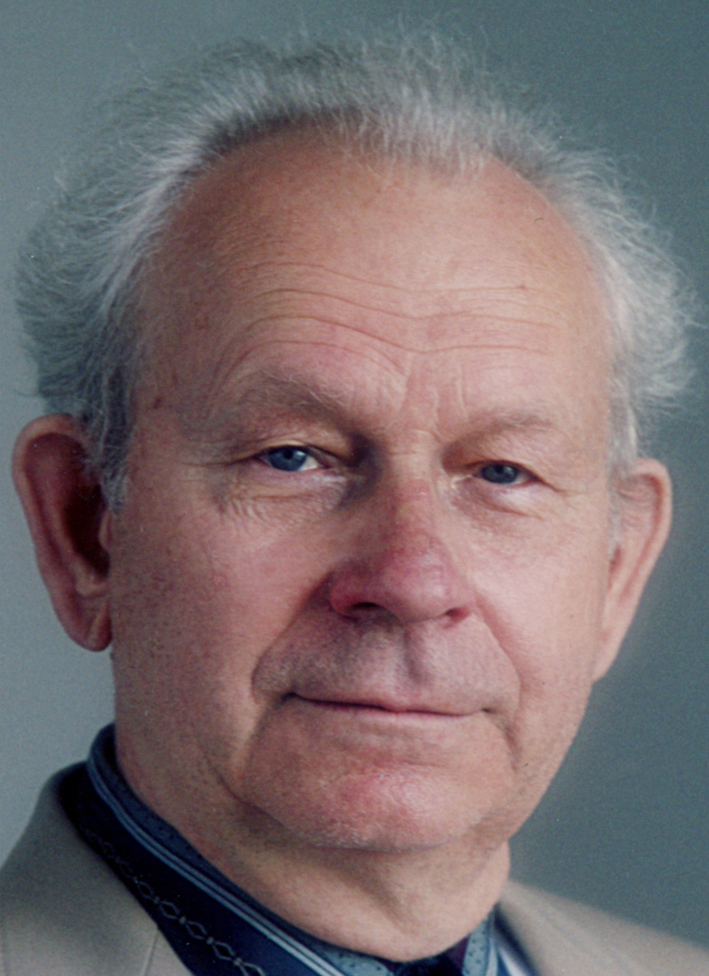Scientific Horizons of Karazin: Project "Functionalized Fluorescent Organogels for Detection, Accumulation, and Monitoring of Radionuclides and Metal Ecotoxicants"

Karazin University is a hub of numerous scientific discoveries and research that have changed the world and set the stage for new generations of scientists. From its earliest days, the university has aimed for the highest standards in education and scientific research. Today, Karazin University continues this illustrious tradition, maintaining a high level of scientific research activity.
By decision of the Scientific Council of the National Research Foundation of Ukraine on July 2, 2024, a project by representatives of the Research Institute of Chemistry at Karazin University received grant support under the competition "Leading Science in Ukraine."
The Karazin Research Institute of Chemistry is the first research institute of chemistry in Ukraine. It will celebrate its 95th anniversary in September. The institute includes a unique laboratory of radiochemistry and radioecology, which is not found in any other higher educational institution in Ukraine.
%20(1)%20(1).jpg)
We spoke with Oleksandr Roshal, Acting Director of the Institute of Chemistry at Karazin University and the leader of the project "Functionalized Fluorescent Organogels for Detection, Accumulation, and Monitoring of Radionuclides and Metal Ecotoxicants," which has received grant support. He shared insights into the uniqueness of the idea, organization of work, and the importance of university science.
Tell us about your project: what is its main goal and what problems is it intended to solve?
In any case, all science is now related to the war. There are various levels of problems related to physics, chemistry, i.e., natural sciences, humanitarian problems, psychological problems, etc. From our side, we observe a very large number of problems that need to be solved using natural sciences, particularly chemistry.
What is the essence of our project? We are constantly being bombarded. All these shells contain metals - iron, aluminum, magnesium. They pollute the soil, change its chemical composition, affect the state of our environment, vegetation, and animal life. In fact, ecocide is happening: the ecological systems that exist are being killed, and nature will replace them with something new. But mostly these are problems for biologists and ecologists. Chemists need to monitor changes in the chemical composition of the environment, study how to clean it up, and what to do next.
There is another unexpected problem: all these bombs and shells contain a lot of electronics. And electronic modules contain the entire periodic table. There are europium, gadolinium, cerium - elements that we usually use very rarely. These are so-called trace elements, and most of them are inadequately researched. How they will affect ecosystems, and therefore us, no one knows.
These uranium atom cores decay, and strontium, cerium, and other elements are formed from them. Some of them are non-radioactive, some are radioactive, there are not many of them, but they accumulate, and how this will affect is unknown.
If you take soil and conduct a regular chemical analysis, you will not find these elements because their concentrations are so small that the sensitivity of physico-chemical methods is insufficient to determine and measure their quantity. Therefore, before starting the analysis, microelements need to be accumulated. Our project deals with the development of new methods for accumulating microelements for further analysis.
In summary, it can be said: there is a global, environmental problem - environmental control, monitoring of the ecological state regarding microelements. Then there is a chemical problem - this is chemical analysis. We need to change the methodology of chemical analysis of microelements, accumulate them.
What technologies and methods are used in your research, and what makes your approach unique?
To accumulate microelements, we will develop special gels. What is a gel - this is understandable, for example, aspic - this is a gel, but it dissolves in water. And we take gels that swell but do not dissolve in water.
As a starting point, we chose two types of already known gels. One gel is natural, these are alginic acids, extracted from algae. They are inexpensive, used in perfumery, they make marmalades with them, zephyr, pastille, that is, they are used in the food industry.
The second gel is from a synthetic polymer - polyacrylic acids. Everyone has seen these balls in supermarkets with cosmetics, household chemicals - gel with a flavor. They dry out and compress into small particles. If you pour water, they swell again. These are polyacrylic acids.
We will take these two polymers and attach special fragments of molecules to them, which we will synthesize. Here deep chemistry begins: in this gel, we will chemically attach special new groups (they are called ligands) that will bind to atoms of microelements. Through such a modified gel, water - river or after mixing with soil - easily penetrates. And the gel will capture atoms of certain elements there, and they will accumulate. And then this organic gel with accumulated microelement can either be dried or burned, and the ash can then be used for regular chemical analysis.
We will try to make selective gels, that is, for a certain element: gel for uranium, gel for cerium, gel for europium, etc. There are no absolutely selective reagents, but something significant can be done in this direction.
The uniqueness of our idea lies in the fact that our attached fragments that bind to metal atoms can also glow. This is not accidental: our laboratory at the Institute of Chemistry specializes in luminescent chemistry, i.e., compounds that glow.
The obtained gels will not only bind compounds but also change their properties: either there will be luminescence, or, on the contrary, it will disappear, or the color of the gel will change. Thus, we can observe how accumulation is taking place. For example, we can visually assess that binding is taking place by illuminating the gel with a regular UV flashlight. This has not been done before. This is an absolutely new idea.
Our project is planned quite realistically - so that it can be implemented and achieve a positive result. Before creating it, this idea was discussed, our team of authors relied on what we had already done, on our works, articles. The project received very high scores from reviewers. Therefore, we are confident that we will definitely get a result.
Which of our experts will be involved in the project, how their experience and knowledge will help achieve the goals set?
The project will be carried out by 6 employees of the Institute of Chemistry at Karazin University. According to the competition terms, graduate students and candidates of sciences must also be involved.
The Institute of Chemistry has two major departments. Handling the inorganic part, specifically radioactive elements and microelements, will be the responsibility of the Radiochemistry and Radioecology Department. By the way, no other Ukrainian higher education institution has a laboratory specializing in the chemistry of radioactive elements and radioecology. We have a repository of radioactive isotopes for scientific use. In this regard, our university and the Institute of Chemistry are unique.
The synthesis of ligands and modification of gels will be performed by researchers from the Physical-Organic Chemistry Department. We have two synthetic specialists — a senior researcher and a graduate student. They will synthesize and attach ligands to the gels, which will capture microelements or radioactive elements while altering their spectral properties.
Another senior research associate at our institute, a physical chemist with extensive experience, will study the binding of these compounds. She will investigate changes in luminescence, fluorescence, quantitative binding characteristics, and more. I will also be involved in this part of the work as a physical chemist. Therefore, everything is planned out: who does what and when.
Currently, I am preparing the necessary documents, and once they are signed, we will commence our work. We are already sourcing reagents; some we have in-house, so the preparatory process is underway.
Is grant support from the National Research Fund of Ukraine important for such projects today, and why?
Currently, science in Ukraine primarily develops thanks to grant support. Employment for scientists directly depends on participation in grant projects, as basic funding for each employee is insufficient. Despite the increase in funding by the Ministry of Education and Science of Ukraine this year and allocation of funds for equipment purchase, we still heavily rely on grants from the Ministry of Education and Science of Ukraine, with the National Research Fund of Ukraine (NRFU) coming in second.
In terms of science overall, university-based research is its most crucial component. Higher education institutions with research components offer not only learning opportunities but also research conduct, idea generation, teamwork in research, and qualified assistance from colleagues. Scientists then enter the wider world of science—research institutes, industry-specific applied institutes, firms, and academies. University-based research generates scientists, and misunderstanding this could lead to catastrophic consequences later on.
This year, our university was the sole winner in the NRFU project competition. The total project funding amounts to 7,205,000 Ukrainian hryvnias. Additionally, researchers from the Institute of Chemistry have recently secured an international grant from the Simons Foundation. Each institute employee applied individually on a competitive basis and all successfully received scholarships. This demonstrates the high level of training of our specialists and the fact that we employ very competent world-class professionals whom we cannot afford to lose. This university-based research is our pride.
The majority of articles published by the Institute of Chemistry employees are indexed in Scopus, and our work is featured in American and European publications.
How can the results of this research be applied in practice?
We are engaged in fundamental science, which produces theoretical outputs that can subsequently be used for practical purposes. Other projects are needed for applied purposes, requiring even more funding and effort. However, these projects implement the results obtained at the fundamental level, proving scientific outcomes for societal use, yielding profits, and thereby improving our world. Without fundamental science, there can be no applied science, meaning there would be no positive changes.
We will study which compounds are suitable for which metal ions, how to obtain new modified gels, publish our findings, and provide recommendations. If we discover something requiring intellectual protection, we will certainly file for patents. Our work concludes there, and further research will be continued through grants for applied science. I hope that the outcomes of this project execution will attract interest because it concerns ecology, our existence, and our safety.
In our previous NRFU project, "Indicators based on chromone derivatives for fluorescent determination of β-glucosidase activity," we achieved positive results. Based on our findings, the development of reagents for environmental screening—assessment of soil quality, soil recovery rate, river water quality — and for medical purposes, such as cancer cell diagnostics, becomes feasible. An annotated and scientific report can be found on the NRFU website.
Our work is a lengthy process, but without fundamental science, there will be nothing.






.jpg)


.jpg)
.jpg)

